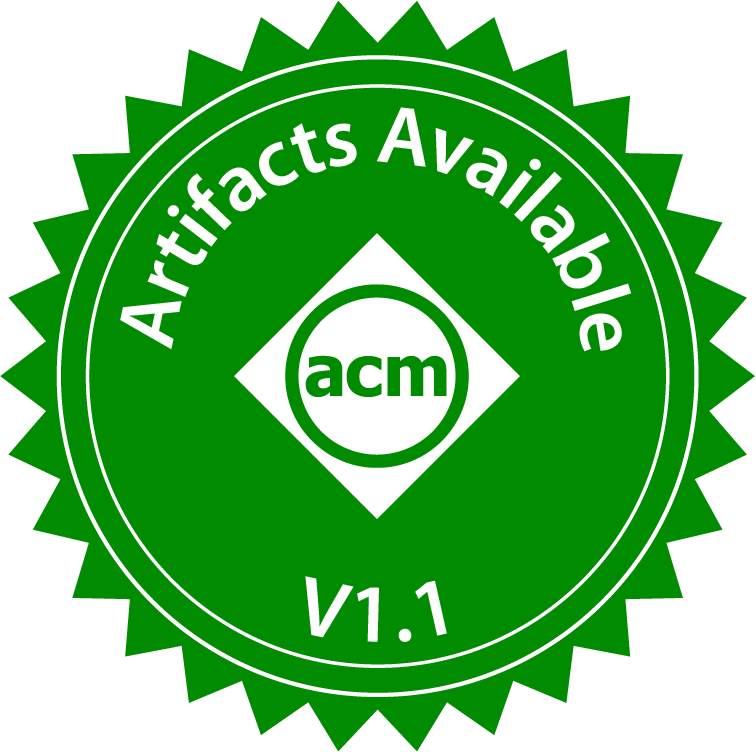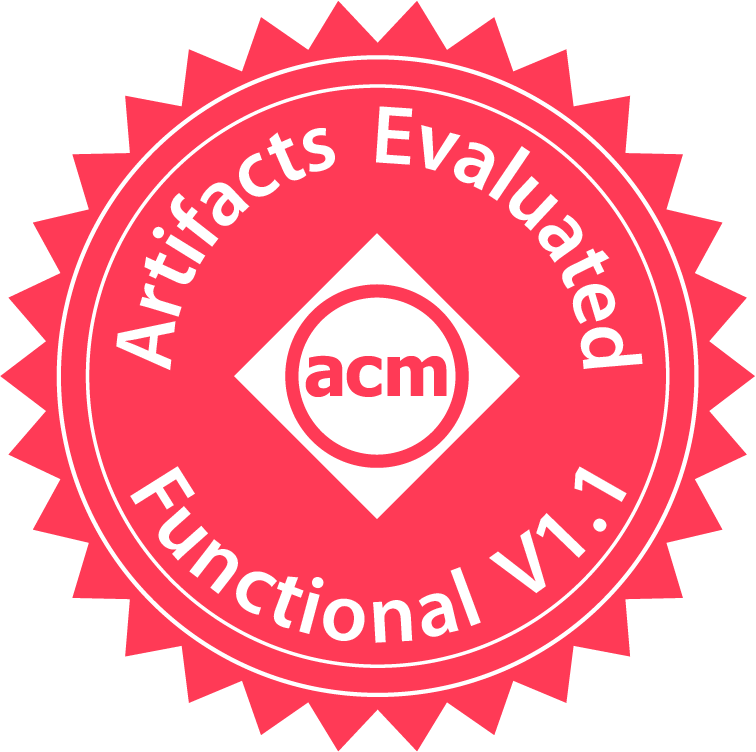Artifact Review Summary: Witcher: Systematic Crash Consistency Testing for Non-Volatile Memory Key-Value Stores
Artifact Details
Badges Awarded
| Artifact Available | Artifact Functional |

|

|
Description of the Artifact
The artifact is publicly available on GitHub. The artifact was evaluated at commit ad69038.
The artifact contains the following:
- A set of instructions that describes how to use the artifact.
- A fork of Giri, a dynamic program slicing tool implemented on LLVM, that the authors extended to support PM tracing and the invariant analysis required by Witcher.
- Access to a ready-to-use virtual machine image (hosted on Google Drive) which contains all dependencies pre-configured and pre-installed that are required to run the artifact.
- A collection of Python scripts that run Witcher and run the third-party applications used in evaluation section of the paper.
- Lists of the correctness and performance bugs that present the details of found bugs in the paper.
Environment(s) Used for Testing
The evaluators were able to use the author-provided virtual machine image (using qemu-system_x86) running
on a host machine equipped with Intel(R) Xeon(R) Gold CPUs and at least 64GB of DRAM and 100GB of storage.
The evaluators were also able to evaluate the artifact on a bare-metal machine running 64-bit Fedora 29 with a
similar CPU, memory, and storage configuration as used to run the virtual machine.
Step-By-Step Instructions to Exercise the Artifact
The evaluators first had to install gdb (both on the author-provided virtual machine and on a bare-metal installation), as gdb is a dependency of Witcher. This can be done by running the following:
sudo yum install gdb
The evaluators then ran the remainder of the dependency installation instructions first before running the other installation and compilation steps.
For the “Setup from scratch” instructions (applicable only when not using the author-provided virtual machine image), the evaluators substituted the “get source” instructions under Installation of llvm and clang 9.0.1, with the following:
mkdir -p $LLVM9_HOME
wget https://github.com/llvm/llvm-project/releases/download/llvmorg-9.0.1/llvm-9.0.1.src.tar.xz
wget https://github.com/llvm/llvm-project/releases/download/llvmorg-9.0.1/clang-9.0.1.src.tar.xz
wget https://github.com/llvm/llvm-project/releases/download/llvmorg-9.0.1/compiler-rt-9.0.1.src.tar.xz
tar xvf llvm-9.0.1.src.tar.xz && rm -f llvm-9.0.1.src.tar.xz
tar xvf clang-9.0.1.src.tar.xz && rm -f clang-9.0.1.src.tar.xz
tar xvf compiler-rt-9.0.1.src.tar.xz && rm -f compiler-rt-9.0.1.src.tar.xz
cp llvm-9.0.1.src/* $LLVM9_HOME
cp clang-9.0.1.src/* $LLVM9_HOME/tools/clang
cp compiler-rt-9.0.1.src/* $LLVM9_HOME/projects/compiler-rt
The evaluators were then able to follow the remainder of the instructions provided with the artifact as written.
How The Artifact Supports The Paper
The artifact is available; The authors provide the source code, documentation, and examples on GitHub that match the description of the system in the paper. The artifact is also functional; Witcher can be built and run with minimal modifications to the author-provided instructions. The instructions for running the experiments are straightforward and many of the experiments described in the paper can be easily run using the provided instructions. So, the artifact is available and is functional in its current state and meets the criteria for these badges (“Artifacts Available” and “Artifacts Evaluated - Functional”).
Additional Notes and Resources
Experiment Notes
Under the instructions for running the scripts to generate figures/tables from the paper, a future user should note that python3 $WITCHER_HOME/script/instrument.py must be run after making any modifications to $WITCHER_HOME/script/tasks.py file.
Additionally, the evaluators encountered issues instrumenting (i.e., running instrument.py) on the P-HOT and redis experiments (listed in tasks.py), so future users may also encounter issues with these experiments as well.
Bug Diagnosing Instructions
The authors provided an overview of how to manually find correctness bugs found by Witcher, which may be of interest to future users interested in further exploring some of the bugs detailed in the provided bug lists:
Take Level_Hash as an example:
path: $WITCHER_HOME/benchmark/Level_Hashing/random/2000/replay-output-p/res
file: classify_res_details
it shows the grouping result
for example, pm.img-0-99664-99661-output: 0 is the crash operation id, 99664 is the crash fence id, 99661 is the crash store id
file: atmoic_write.pmtrace
it shows the collected trace
search for the crash store/fence id, then you can reason about the crash state